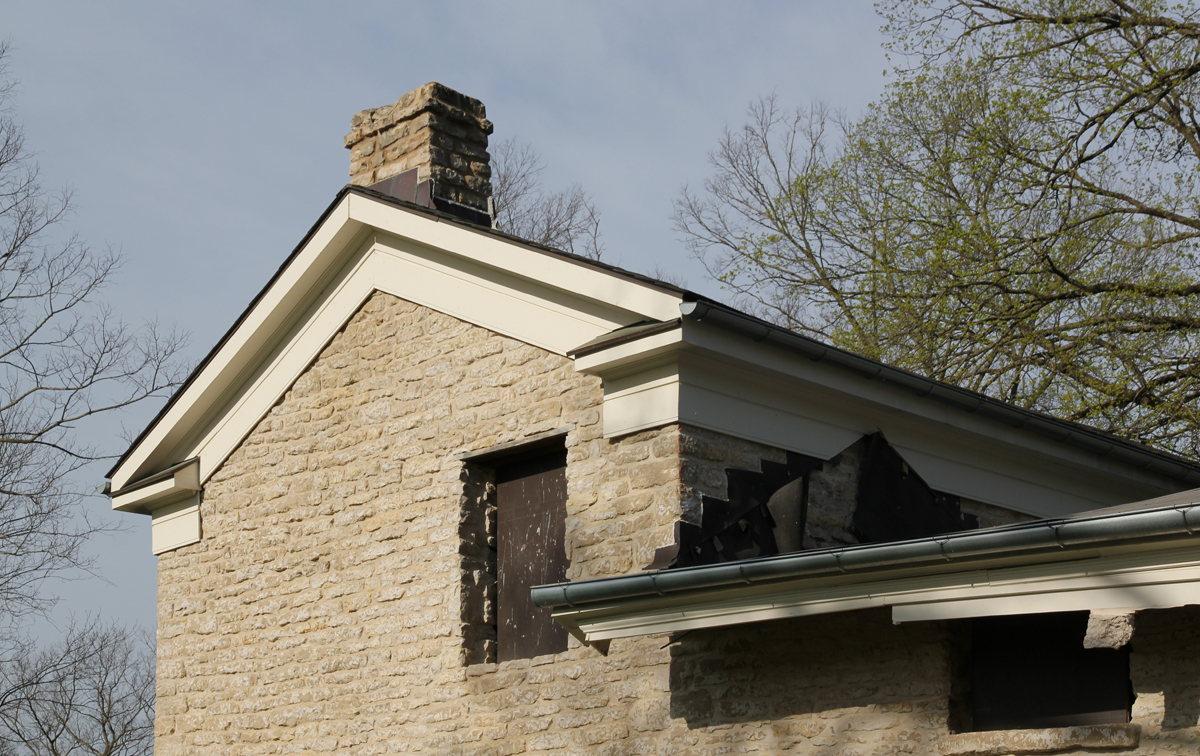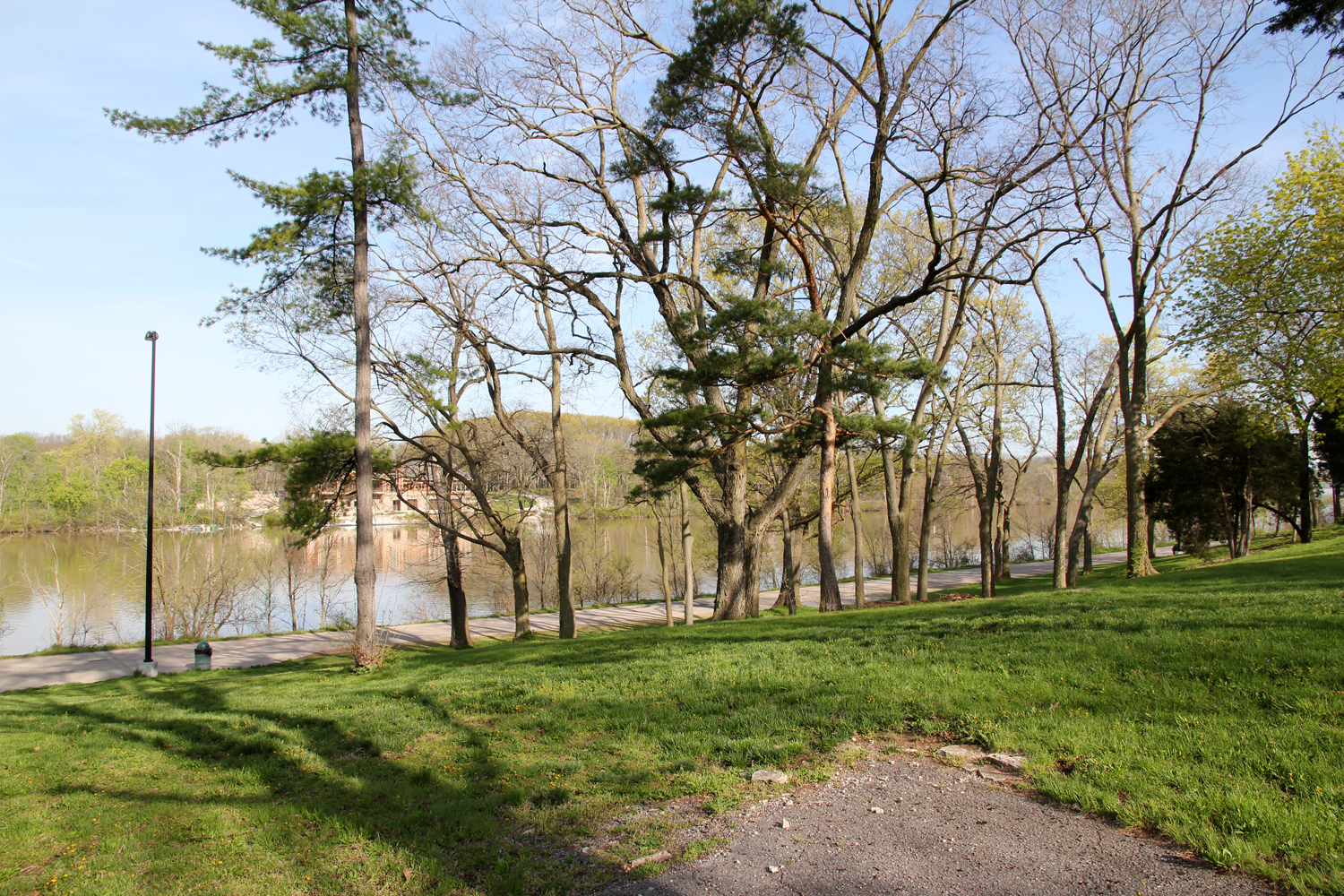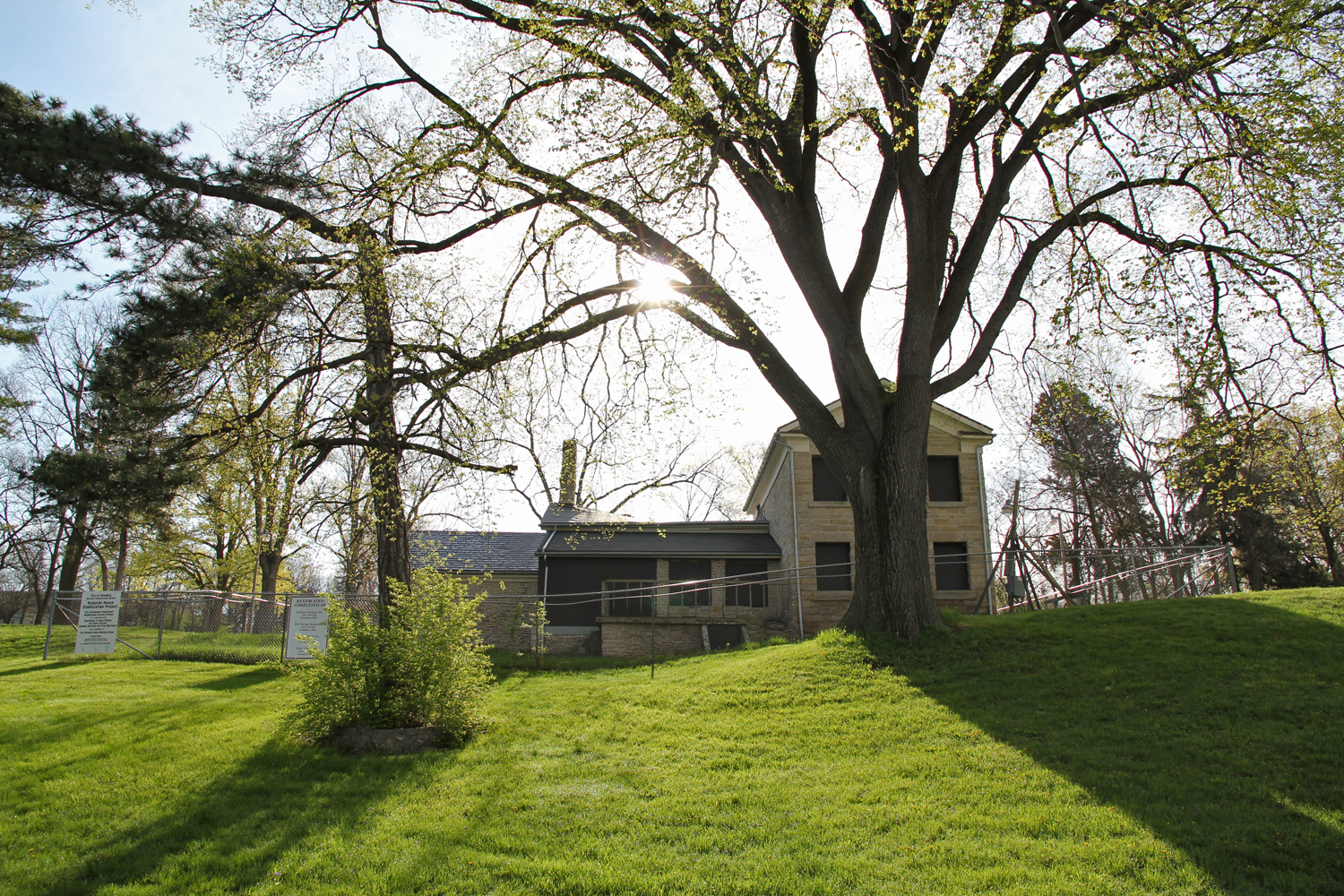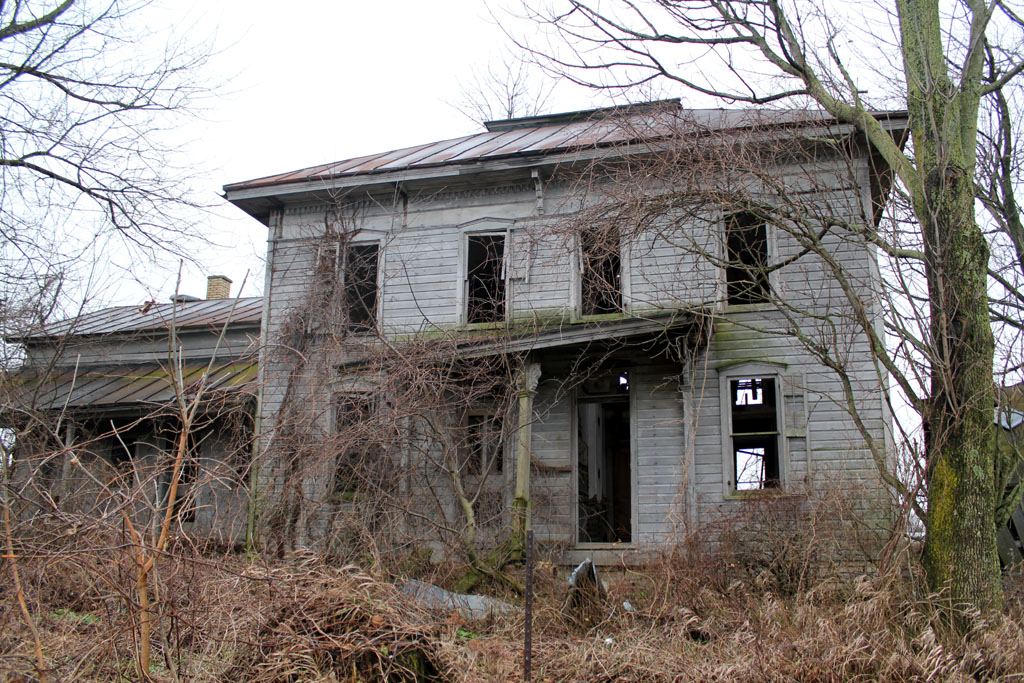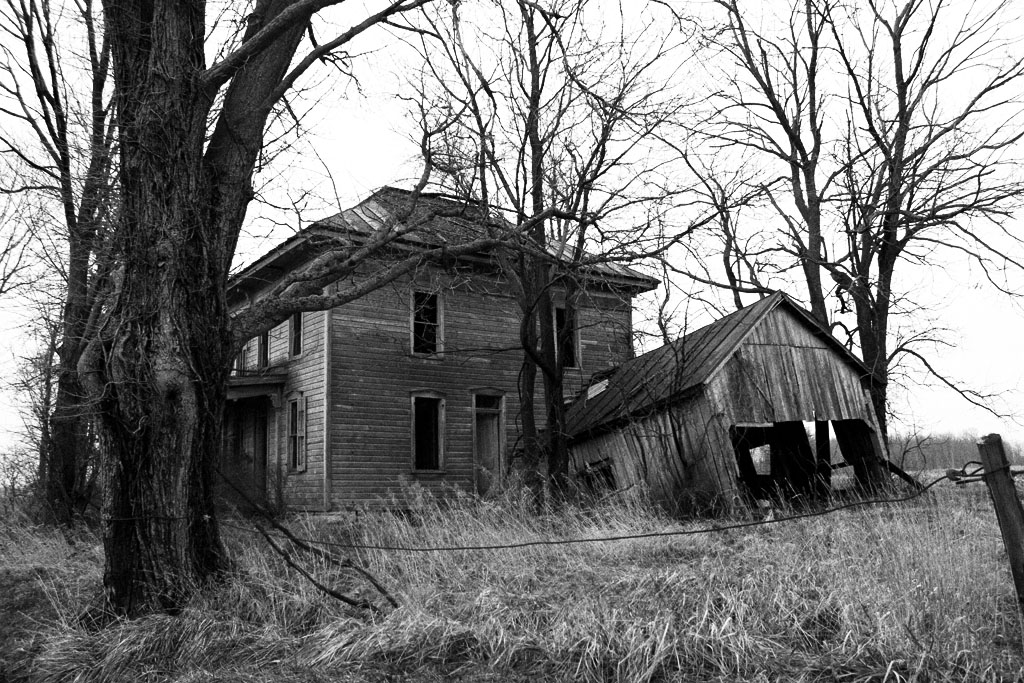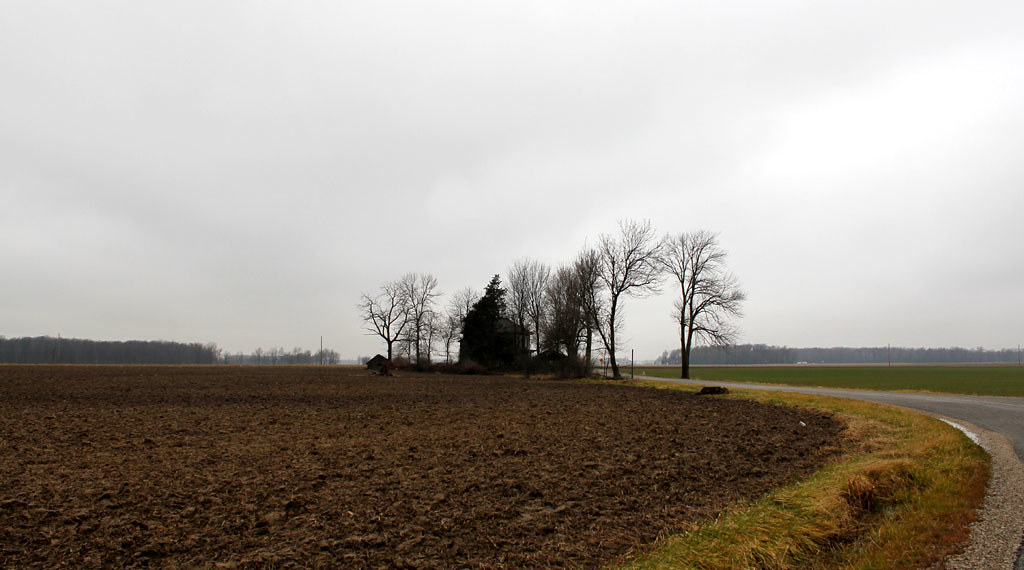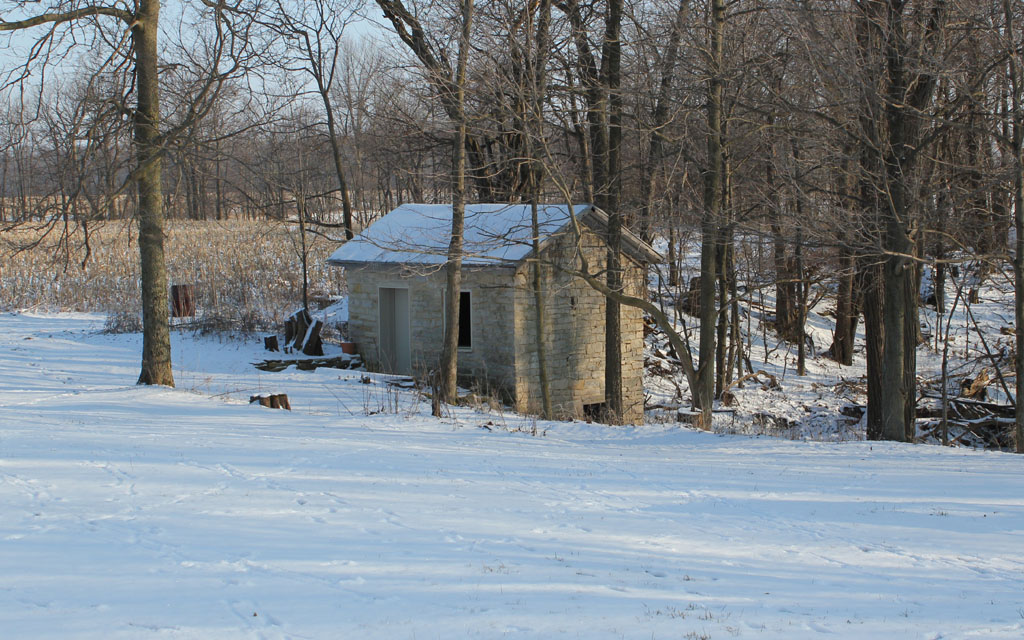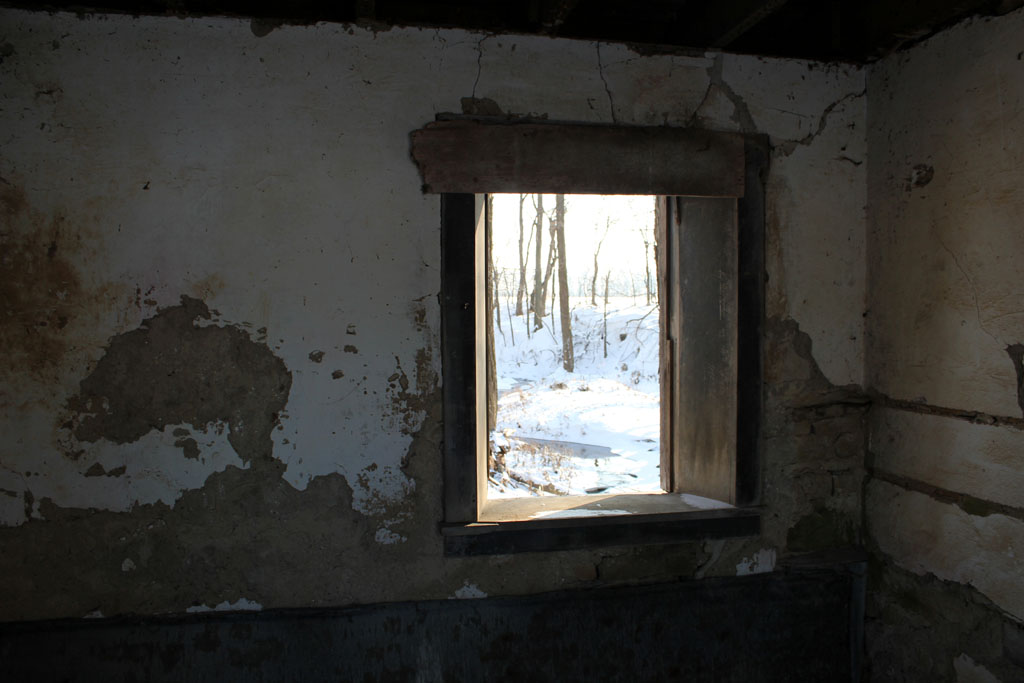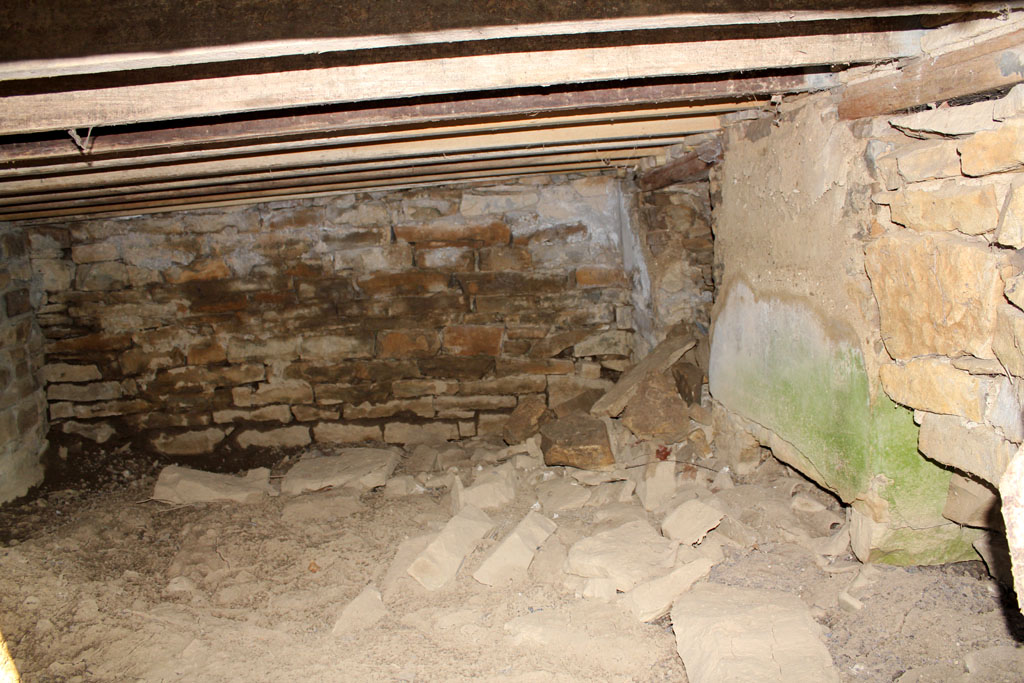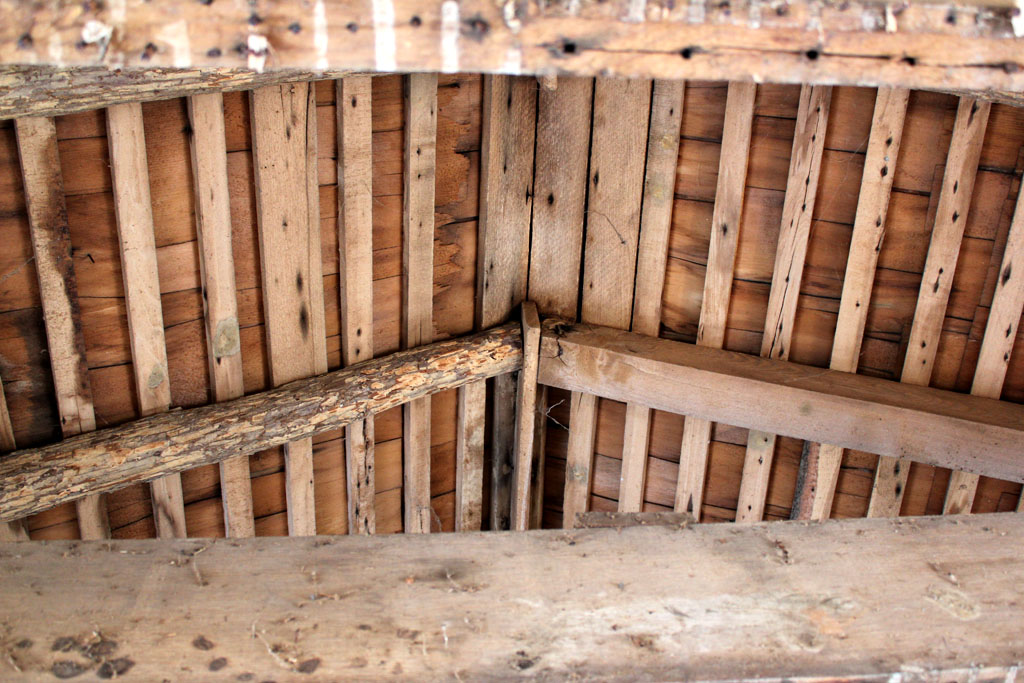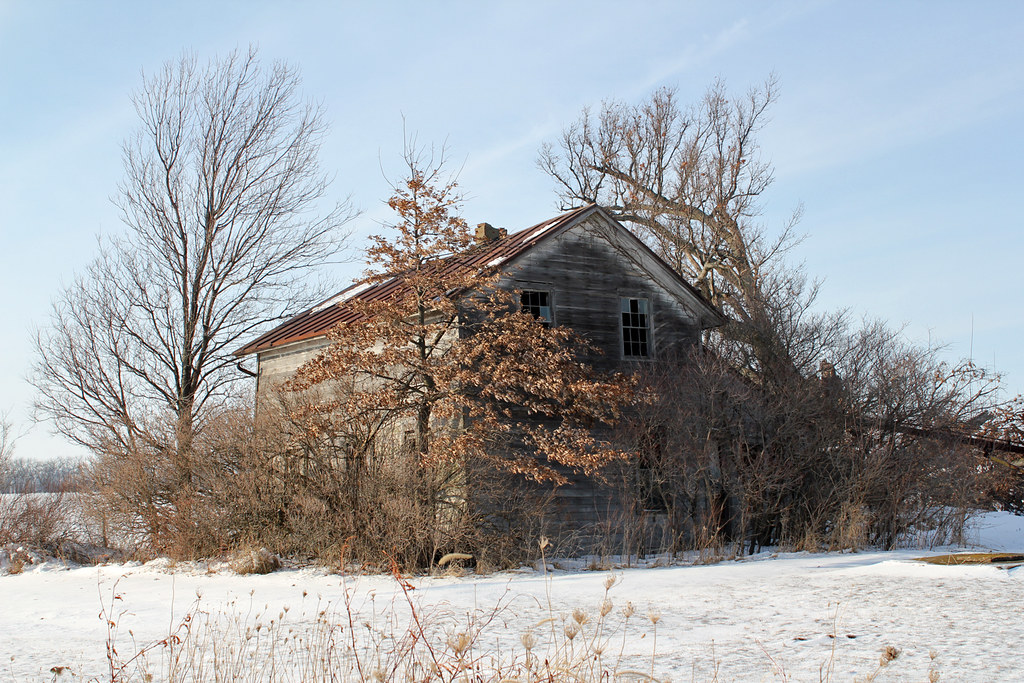Bloom Township, Seneca County, Ohio
This is, without question, the most fascinating structure I've had the pleasure to examine. The log portion measures 24 feet by 18 feet, common dimensions for a structure of the time, while the logs themselves are about sixteen inches by seven inches.
I don't know exactly how old the house is. Settlement of the area began in the early 1820s and progressed quickly; quite a few fine 1840s-era homes remain there. Based on construction details, I imagine that the structure was built in the 1830s or early 1840s, and remodeled shortly after.
In 1874, J. Spitler owned the property. The Spitler family was prominent in the township, and a number of surrounding farms were also owned by family members. By 1896, ownership of the property had passed to J. Mesnard.
The house was vacant by 1959. Given its complete lack of electrical wiring, I'd estimate a 1930s (pre-rural electrification) abandonment date. I can't think of any other structures unused for such a long time, yet in such (relatively!) good condition.
 |
| Aerial photos of the property, from 1959 and 2012, respectively. |
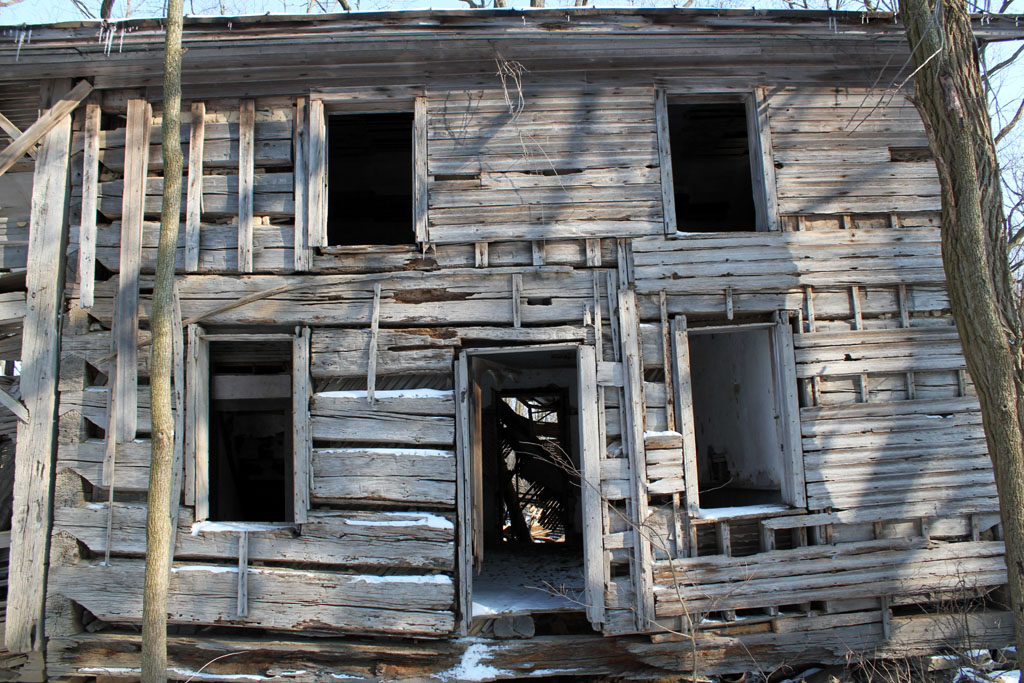 |
| Front of the log portion. The rightmost window was once a door. |
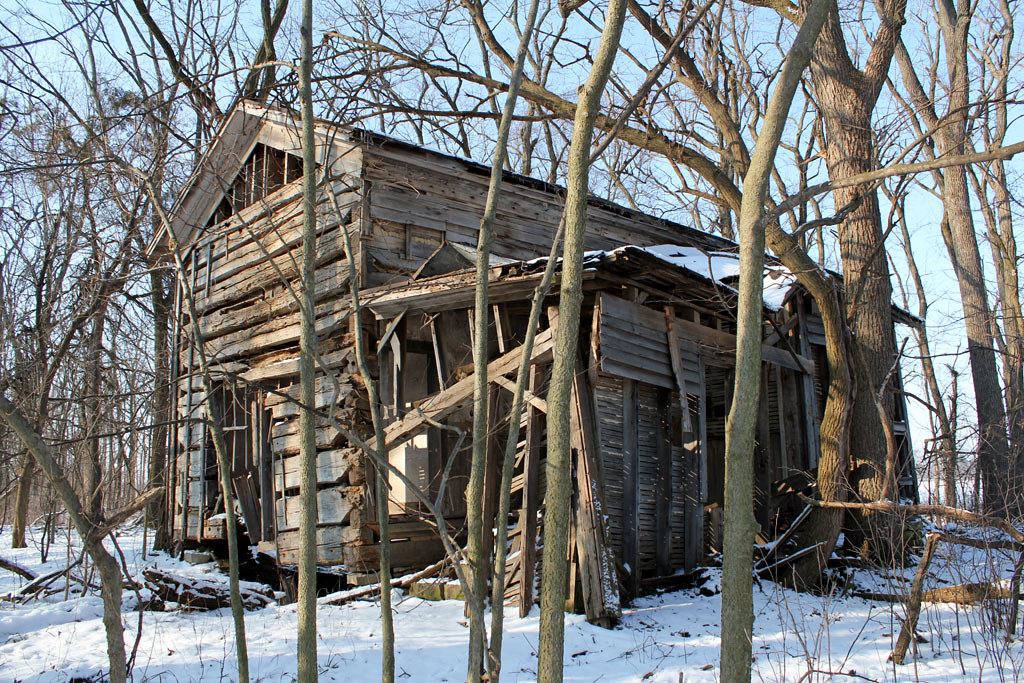 |
| Rear, looking northwest. Both of the home's additions are of braced frame construction. |
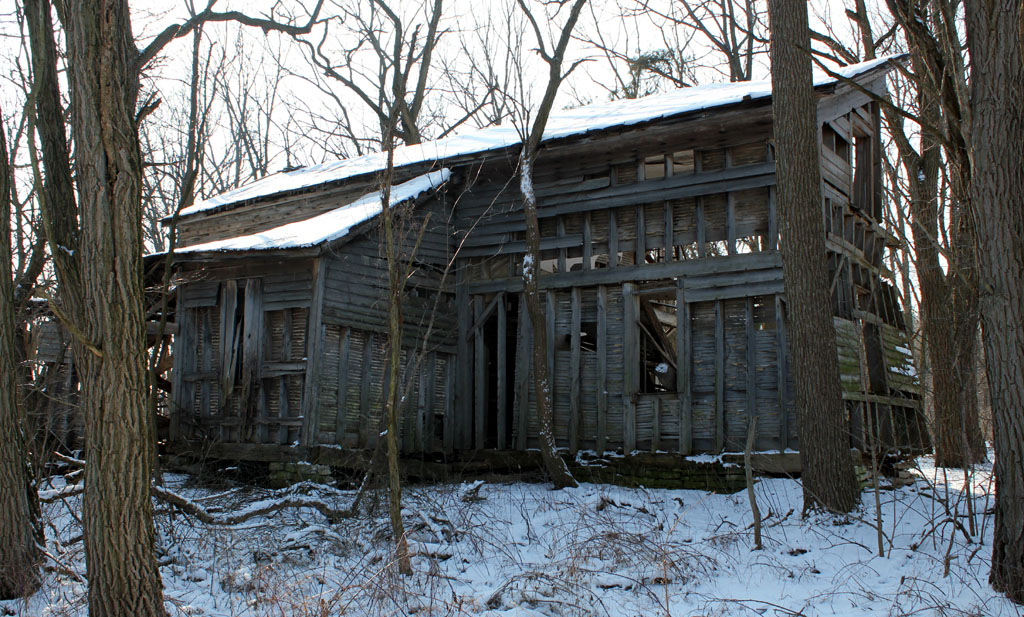 |
| Typical mid-19th century construction. |
 |
| An adjacent barn foundation. According to local legend, the barn burned in a 1940s arson fire set by a disgruntled farm worker. |










